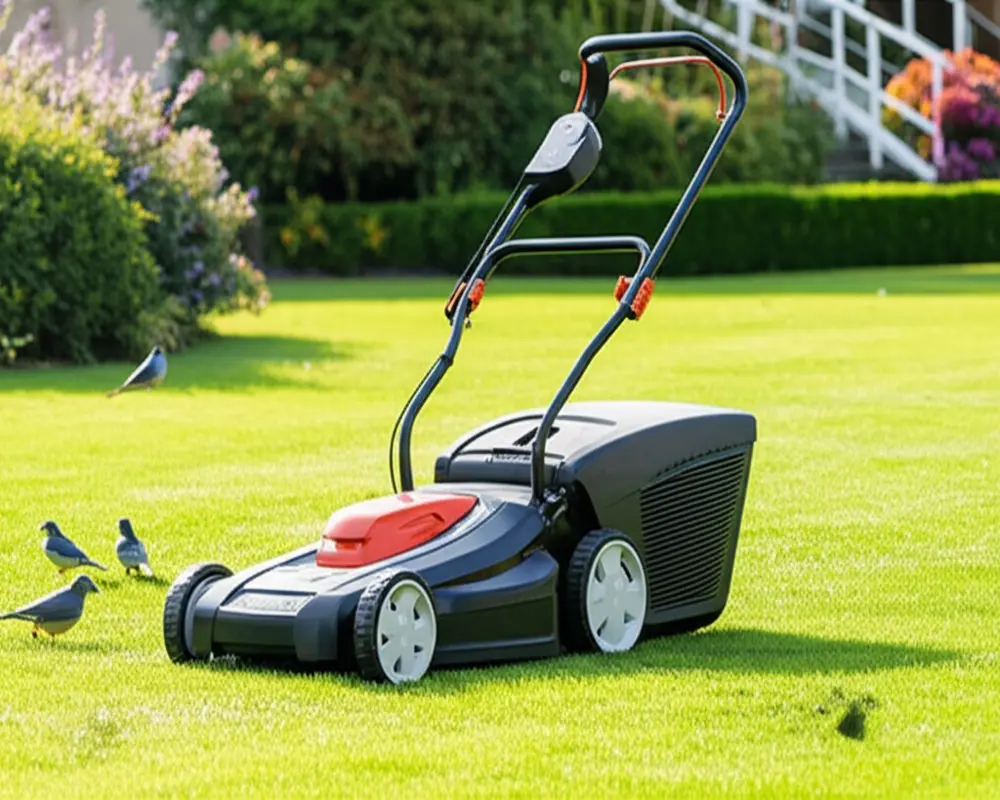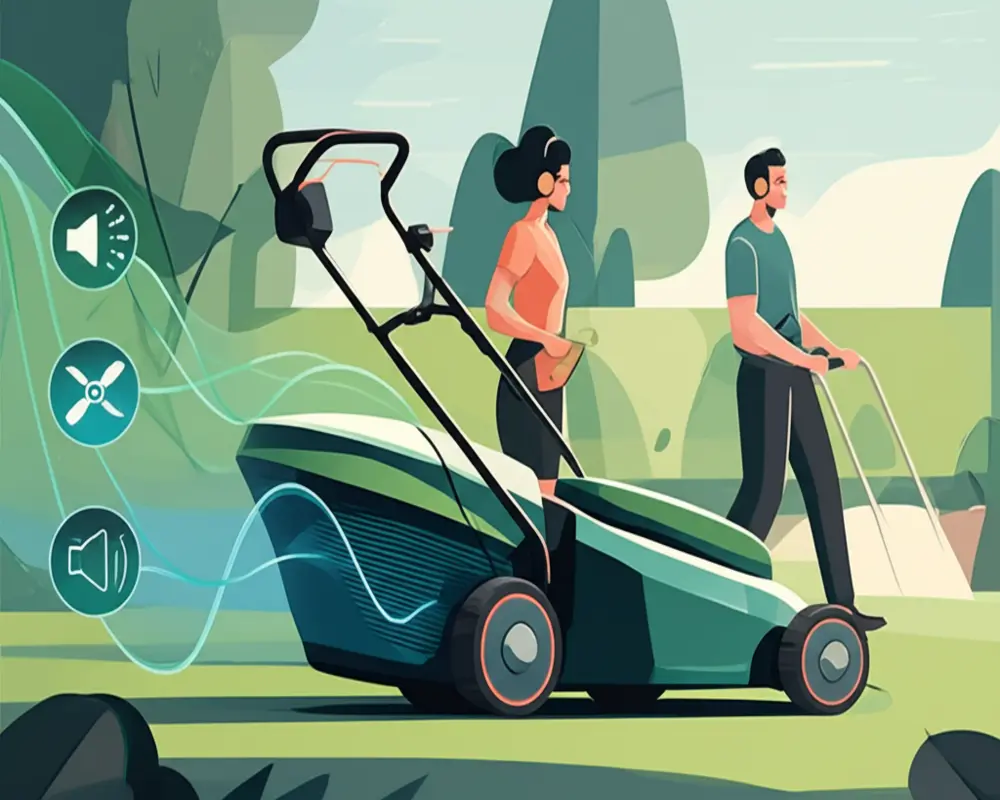Lawn Mower Noise Reduction: How to Achieve a Quieter Cut in 2025
For many homeowners and gardening enthusiasts, mowing the lawn is a routine part of yard maintenance. Yet, the loud noise generated by lawn mowers often disrupts the peace, poses risks to hearing health, and can strain relationships with neighbors. Understanding effective lawn mower noise reduction techniques is essential for quieter, more enjoyable lawn care in 2025. This comprehensive guide explores the causes of mower noise, practical DIY fixes, quieter mower options, and safety measures to protect your hearing while maintaining a well-kept yard.
Understanding Lawn Mower Noise and Its Impact
Lawn mowers typically produce noise levels ranging from 85 to over 100 decibels (dB), depending on the model and engine type. Prolonged exposure to noise above 85 dB can cause hearing damage, as noted by the Safety Hearing Loss Prevention Center. Beyond personal health, excessive mower noise contributes to environmental noise pollution, disturbing wildlife and communities. In urban or suburban settings, noisy lawn equipment can lead to neighbor complaints and escalate tensions.
Given these concerns, the objective is to identify the primary sources of mower noise and to provide practical methods to reduce sound output without compromising performance. Achieving a quieter cut benefits both the operator and the surrounding environment.
Diagnosing Lawn Mower Noise Sources
Before tackling noise reduction, it is crucial to pinpoint where the sounds originate. A lawn mower’s noise results from various mechanical and operational factors, which can be categorized as described below.

Different Lawn Mower Noises Explained
Rattling and clunking sounds often indicate loose or damaged parts, such as bolts, deck mounts, or unbalanced blades. These noises suggest mechanical instability and can worsen mower vibrations.
High-pitched whines typically arise from bearing wear or belt issues. Bearings that have lost lubrication or belts that are misaligned generate squealing sounds during operation.
Roaring engine noise is frequently linked to muffler problems or engine strain. A cracked or clogged muffler fails to dampen exhaust sound, causing an excessively loud engine roar.
Grinding sounds can occur when mower blades come into contact with hard objects or debris. This indicates blade damage or foreign matter interfering with blade rotation.
Deck vibrations result from resonance when the mower deck is unbalanced or damaged. These vibrations amplify noise and may cause further mechanical wear.
Detailed Troubleshooting Checklist
Diagnosing noise requires careful inspection and listening. Begin by visually examining the mower for loose screws, worn belts, damaged blades, and muffler condition. While the mower is running, perform safe auditory checks at various distances to identify the noise source. Correlate specific sounds to potential faults: rattling with loose parts, squealing with bearings, roaring with muffler issues, and grinding with blade or debris contact.
DIY Techniques to Reduce Mower Noise
Implementing routine maintenance and simple upgrades can substantially reduce mower noise. These methods emphasize the importance of upkeep for quieter operation.
Maintenance of Blades
Sharp, balanced blades cut grass cleanly, reducing strain on the engine and minimizing noise. Dull or bent blades increase vibration and require more power, amplifying sound levels.

To sharpen blades:
- Remove the blade carefully, noting its orientation.
- Use a file or rotary tool to sharpen the cutting edge evenly.
- Balance the blade by checking if it sits level on a nail or blade balancer.
- Replace blades that are excessively worn or damaged.
Regular sharpening, at least once per mowing season or after 20-25 hours of use, helps maintain sound control.
Muffler Care and Upgrades
The muffler plays a key role in sound dampening. Check for cracks, holes, or loose bolts that can cause exhaust leaks and increased noise. Tightening bolts or applying high-temperature sealants can restore muffler integrity. For persistent problems, consider upgrading to an aftermarket lawn mower muffler designed specifically for quieter performance. These mufflers reduce engine roar significantly without sacrificing efficiency.
Reducing Engine Noise and Vibration
Proper engine tune-up reduces noise by ensuring smooth operation. Replace or clean the air filter, change the spark plug, and maintain the correct oil level. Inspect engine mounts and tighten if loose. Installing anti-vibration pads between the engine and deck helps absorb noise and reduce transmitted vibrations.
Tightening Loose Components
Rattling noises often stem from loose deck mounts, handlebars, or wheels. Regularly check and tighten these components. Remove accumulated debris that can cause parts to clatter during mowing.
Managing Deck Resonance
Grass buildup on the mower deck increases noise by amplifying vibration. Clean the deck after every use. Installing sound-dampening mats or applying special coatings can absorb noise. Ensure the deck is level and free of dents or warping to minimize resonance effects.
Bearing and Bushing Maintenance
Bearing wear produces whining or grinding sounds. Signs include rough rotation and excessive play. Lubricate bearings as recommended or replace them if worn beyond repair. Properly maintained bearings reduce friction noise and extend mower lifespan.
Choosing Quieter Lawn Mowers
When shopping for a mower, noise output is an important factor alongside power and features. Several types offer quieter operation:

Electric Mowers
Electric mowers generate significantly less noise than gas-powered models, typically producing 60-75 dB compared to 85-100 dB for gas mowers. They have fewer moving parts and no combustion noise. Popular quiet electric models include corded and battery-powered options. However, electric mowers may have limited run time and power for thick or large lawns.
Manual and Reel Mowers
Manual reel mowers operate silently and require no fuel or electricity. Best suited for small, flat lawns, they offer an environmentally friendly, noise-free alternative. While they demand more physical effort, their quietness and precision cutting are unmatched.
Robotic Mowers
Robotic mowers combine quiet operation with automation. They typically emit noise under 60 dB, allowing near-silent lawn maintenance. Consider the higher initial cost and setup requirements, but enjoy hands-free, low-noise mowing year-round.
Buying Tips
Check the decibel ratings published by manufacturers or verified by the American National Standards Institute (ANSI). Look for features such as variable speed controls, mulching capability, and vibration reduction. Prioritize noise level alongside power source and lawn size compatibility.
Preventative Maintenance Habits for Long-Term Noise Control
Consistent care extends mower life and keeps noise minimal. Establish regular cleaning schedules to remove grass, dirt, and debris. Conduct seasonal inspections to identify wear or damage early. Store the mower in a dry, sheltered area to prevent rust and deterioration. Always follow manufacturer maintenance guidelines to preserve optimal performance and sound levels.
Safety Measures to Protect Hearing
Exposure to lawn mower noise without protection risks permanent hearing damage. Understand that noise-induced hearing loss accumulates over time. Use proper ear protection such as earmuffs or earplugs designed for high noise environments. Ensure a snug fit to block harmful sound effectively. The Environmental Protection Agency provides resources on noise pollution and hearing safety.
FAQ on Lawn Mower Noise Reduction
- How often should I sharpen my lawn mower blades to reduce noise?
- Sharpen blades at least once per mowing season or every 20-25 hours of use to maintain quieter operation.
- Can I replace a standard muffler with a quiet aftermarket muffler?
- Yes, aftermarket quiet mufflers are available for many models and can significantly reduce noise if installed correctly.
- What is an acceptable noise level for a residential lawn mower?
- Noise levels below 85 dB are preferable to minimize hearing risks and community disturbance.
- Are electric lawn mowers truly quieter than gas models?
- Yes, electric mowers generally operate at 60-75 dB, much quieter than gas mowers producing up to 100 dB.
- How can I tell if my mower bearings need lubrication or replacement?
- If you hear whining or grinding noises and notice rough rotation, lubrication or bearing replacement may be needed.
Conclusion: Enhancing Your Lawn Care with Noise Reduction
Reducing lawn mower noise is achievable through careful diagnosis, regular maintenance, and choosing quieter equipment. Sharp blades, muffler upkeep, engine tuning, and addressing loose parts all contribute to a quieter cut. Opting for electric, manual, or robotic mowers further decreases noise pollution. Consistent preventive care and hearing protection ensure long-term comfort and safety.
By embracing these strategies in 2025, you enhance your outdoor experience, protect your hearing, and foster better community relations with quieter lawn mowing.
For further insights on garden tool maintenance and noise control, explore resources such as the Garden Spade Rust Prevention guide and expert interviews on cultivating a peaceful garden environment.

